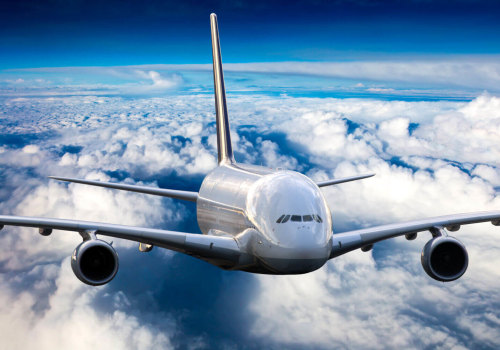When most people think of moving, images of cardboard boxes, rented trucks, and long drives often come to mind. But for those facing cross-country or international relocations—or simply looking to cut down on time and hassle—moving by airplane presents a fast, efficient, and surprisingly organized alternative. Whether you're relocating for work, school, or a personal reset, air travel isn't just for your carry-on and suitcase. With the right planning and resources, it’s entirely possible to relocate your life via the skies. This high-altitude method of moving is gaining traction among professionals, military families, and global citizens who need to make quick, streamlined transitions without sacrificing peace of mind. From logistics and packing tips to coordinating with airlines and professional services, here's everything you need to know to make your sky-high relocation stress-free.
Why Choose to Move by Air?
Airplane relocation offers two massive advantages over traditional moving methods: speed and convenience. What could take days by truck or weeks by sea can be accomplished in a matter of hours by air. This is especially valuable for people relocating on tight deadlines or moving internationally. Additionally, air freight offers consistent scheduling and fewer delays due to road conditions or traffic congestion. For time-sensitive relocations, such as starting a new job or getting children settled before a new school term, these benefits are often non-negotiable. Moreover, moving by air can offer better handling for fragile or valuable items, as air freight companies often implement more advanced tracking, climate control, and security systems.
Packing and Preparation: Light, Secure, and Strategic
One of the biggest considerations when moving by airplane is how and what to pack. Since airline freight is calculated by both weight and size, every item should be scrutinized before inclusion. Start by decluttering thoroughly—donate, sell, or dispose of anything non-essential. This is where having access to a dumpster rental service can be especially helpful, allowing you to efficiently offload unwanted items and debris before you pack. When you're ready to start boxing things up, opt for durable, lightweight materials and prioritize items you truly need. Electronics, important documents, heirlooms, and essential clothing should all go in carry-on or checked luggage, while the rest can be shipped as cargo or handled by a professional air freight mover. Use vacuum-sealed bags for soft goods and hard-shell containers for breakables. Label everything clearly with your name, destination address, and contact information.
Working with Air Freight and Relocation Services
If you're transporting more than just a suitcase or two, working with a company that specializes in air freight or international relocation is a smart move. These professionals understand airline cargo rules, customs regulations, and packaging requirements, and they can coordinate your move from door to destination. Many also offer add-on services like packing, documentation, customs clearance, and even storage. Make sure to compare quotes, check credentials, and read reviews. Choose a provider with experience in your destination country or region. This ensures that you’ll get timely advice on restricted items, taxes, and paperwork—saving you from costly delays or missed flights.
Navigating Airport and Customs Logistics
Once your belongings are packed and your flight is booked, you'll need to coordinate the handoff and pickup of your air cargo. Most large airports have cargo terminals that operate separately from passenger terminals. Your chosen relocation provider will often handle this, but if you’re doing it yourself, ensure you understand the process. Bring identification, paperwork, and be prepared to wait for cargo processing. For international moves, customs will inspect your shipment, which can add to the timeline. Avoid surprises by having a detailed inventory list and proof of residence at your new location. Clear communication with your shipping provider and the receiving agent on the other end is key to a smooth transition.
Budgeting for a High-Flying Move
While moving by airplane can be more expensive than ground transportation, the costs may be offset by the benefits of speed, safety, and reduced downtime. Consider what a week of hotel stays, food, and lost work time might cost if you chose a slower moving method. Factor in all elements: ticket prices, air cargo fees, packing supplies, insurance, and service fees from moving companies. Many relocation service providers offer packages tailored to air moves, which can simplify billing and planning. Keep an emergency fund set aside for unexpected fees or delays, especially if customs or foreign regulations come into play.
Conclusion: Soaring Toward a Fresh Start
Moving by airplane isn’t just for the ultra-wealthy or globe-trotting executives—it’s an accessible, effective solution for anyone who values time, efficiency, and peace of mind during one of life’s biggest transitions. With proper planning, strategic packing, and the right support team, your sky-high relocation can be as smooth as your flight. From reducing clutter with a trusted dumpster rental to coordinating logistics with freight professionals, every step you take makes your move lighter and your landing softer. So buckle up, check your itinerary, and prepare for a fresh start from 30,000 feet—it’s relocation, elevated.



